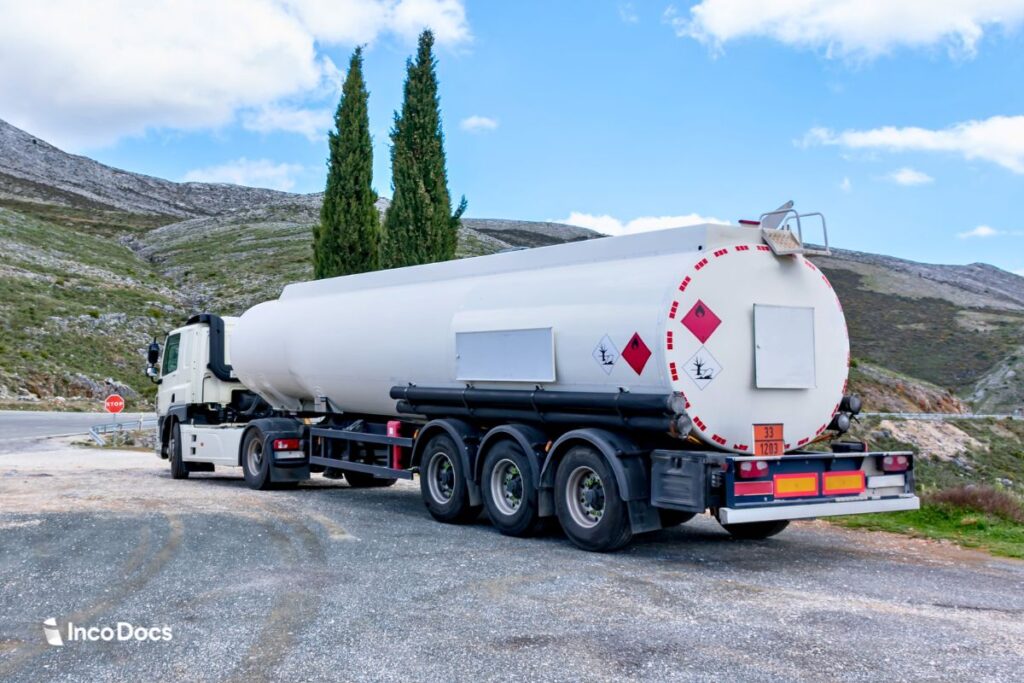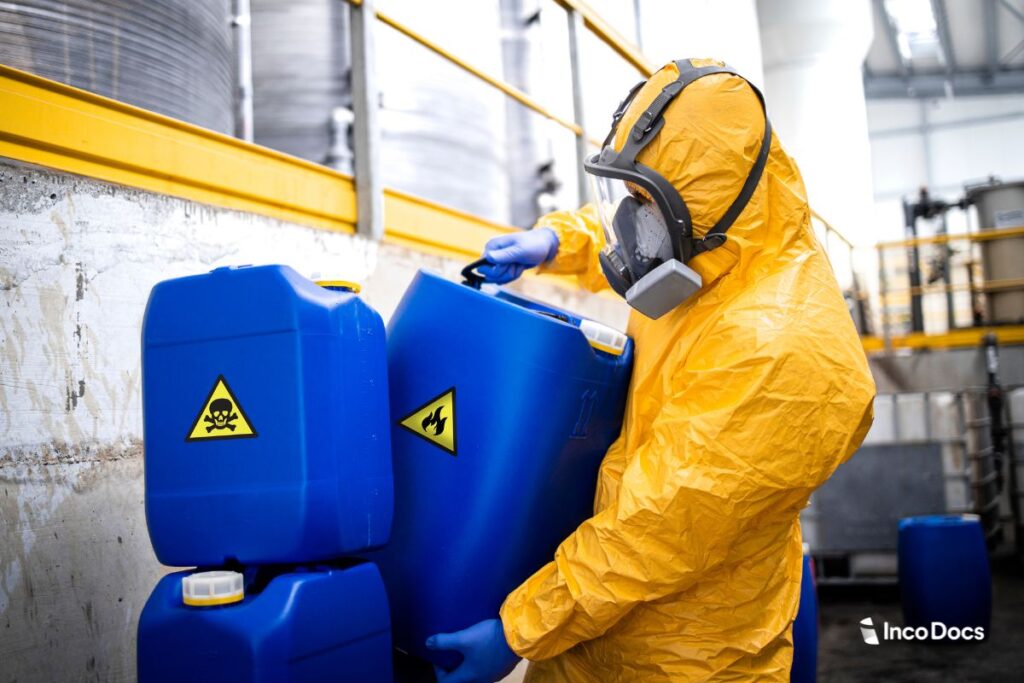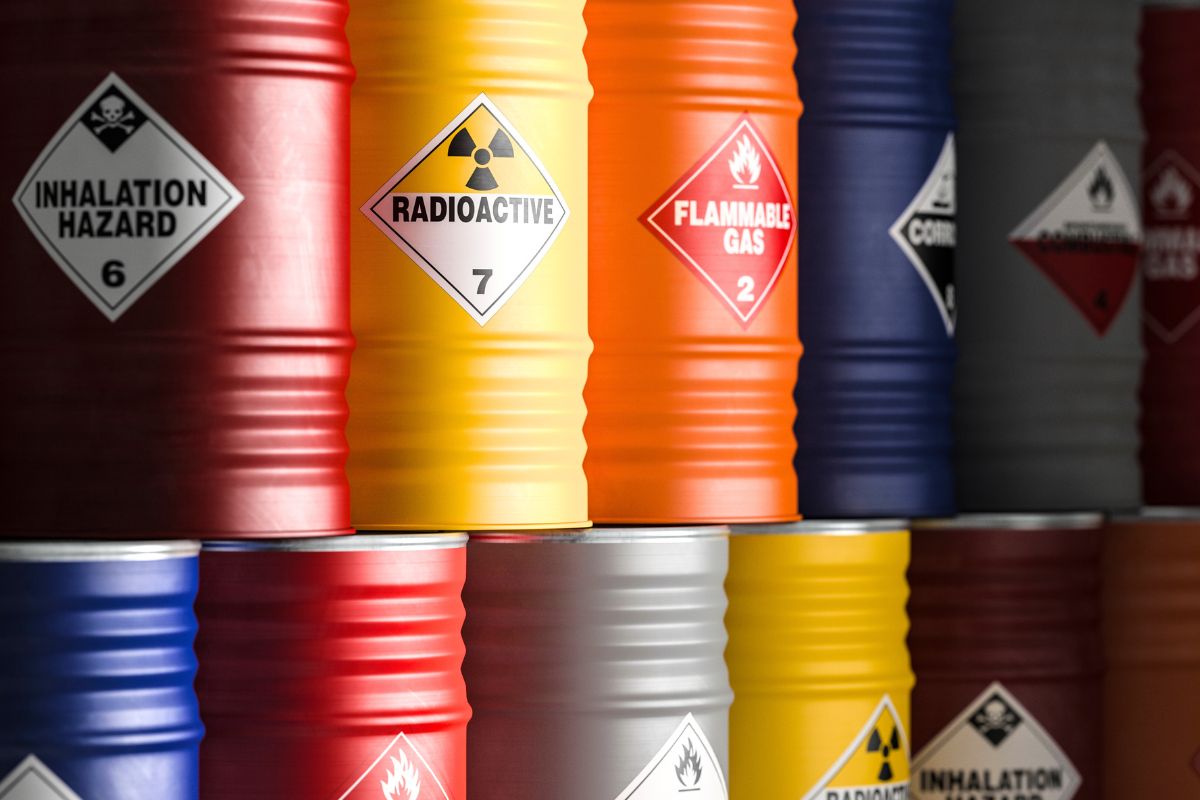Every year improper handling of Dangerous Goods and Hazardous Materials leads to significant safety risks in global trade. There have been major disasters which are discussed at the end where it went wrong.
The terms Dangerous Goods and Hazardous Materials are often confused due to overlapping definitions and varying regulations. Understanding these terms is crucial for safe and compliant transportation.
This article aims to clarify the differences between Dangerous Goods and Hazardous Materials. We will explain their definitions, highlight key differences, and discuss practical implications. By the end, you will know how to identify and handle each properly, ensuring smooth operations in your trade activities.
Definition of Dangerous Goods
Dangerous Goods are items or substances that can pose a risk to health, safety, property, or the environment. The International Maritime Organization (IMO) has established rules to ensure the safe transport of these goods by sea. These rules are outlined in the International Maritime Dangerous Goods (IMDG) Code.
The IMDG Code classifies Dangerous Goods based on their specific hazards, such as being flammable, toxic, or reactive. This classification helps everyone involved in the supply chain to communicate risks and handle, transport, and store these goods safely. The IMDG Code became a mandatory requirement on January 1, 2004, to protect people, property, and the environment from potential dangers during maritime transport.
Examples and Classes of Dangerous Goods
- Explosives (Class 1): Fireworks, dynamite, and ammunition.
- Gases (Class 2): Propane, butane, and chlorine.
- Flammable Liquids (Class 3): Gasoline, acetone, and ethanol.
- Flammable Solids (Class 4): Matches, sulfur, and metal powders.
- Oxidizing Agents and Organic Peroxides (Class 5): Hydrogen peroxide and benzoyl peroxide.
- Toxic and Infectious Substances (Class 6): Pesticides and medical waste.
- Radioactive Substances (Class 7): Uranium and medical isotopes.
- Corrosive Substances (Class 8): Sulfuric acid and sodium hydroxide.
- Miscellaneous Dangerous Goods (Class 9): Lithium batteries and environmentally hazardous substances.
Definition of Hazardous Materials?
Hazardous Materials (HAZMAT) are substances that pose significant risks to health, safety, property, or the environment during transportation or handling. These materials can be toxic, flammable, corrosive, reactive, or radioactive. They are regulated by various organizations, including the Department of Transportation (DOT), International Maritime Organization (IMO), and International Air Transport Association (IATA). The primary aim of these regulations is to ensure safe handling, storage, and transportation to prevent accidents and health hazards.
Examples of Hazardous Substances
- Asbestos: A fibrous mineral used in construction and insulation, which can cause severe respiratory diseases, including lung cancer, when its fibers are inhaled.
- Pesticides: Chemicals used to kill pests that can be toxic to humans and animals, leading to acute poisoning or long-term health effects like cancer.
- Heavy Metals: Elements such as lead, mercury, and cadmium that can cause serious health problems, including neurological and kidney damage, when ingested or inhaled.
- Benzene: A widely used industrial chemical found in plastics, resins, and synthetic fibers, benzene is a known carcinogen. Long-term exposure can cause bone marrow damage, leading to blood disorders like leukemia
While there is overlap between Dangerous Goods and Hazardous Materials, the primary distinction lies in their specific classifications and regulatory guidelines for safe handling and transportation.
Key Differences of Dangerous Goods and Hazardous Materials

Immediate vs. Long-Term Risks
Dangerous Goods present immediate physical risks such as explosions, fires, and chemical burns. These risks are acute and can cause immediate harm to people, property, and the environment. For example, flammable liquids like gasoline can ignite and cause fires, while explosives can detonate and cause extensive damage quickly. Proper classification, labeling, and handling are essential to prevent accidents during transportation and storage.
Hazardous Materials pose long-term health risks, which may not be immediately apparent. These risks include chronic illnesses such as cancer, respiratory diseases, and neurological disorders. Substances like asbestos, benzene, and certain heavy metals can accumulate in the body over time, leading to serious health conditions after prolonged exposure. Monitoring and minimizing exposure are crucial to protect workers’ health over the long term.
Storage and Handling Requirements
Dangerous Goods require stringent storage guidelines to mitigate their immediate risks. This includes using fireproof containers, maintaining proper ventilation, and segregating incompatible substances. For example, flammable liquids should be stored away from oxidizing agents to prevent chemical reactions that could lead to fires or explosions.
Handling Dangerous Goods involves strict adherence to safety protocols, including wearing appropriate protective gear, using proper tools, and following detailed handling instructions to prevent spills and accidents. In contrast, handling Hazardous Materials focuses more on minimizing long-term exposure. This includes using containment systems to prevent leaks, ensuring good ventilation, and implementing health monitoring programs for workers to detect any signs of chronic exposure early.
Transporting Dangerous Goods
Transporting Dangerous Goods requires comprehensive documentation, including Safety Data Sheets (SDS), UN numbers, and proper shipping names. These documents provide critical information on the nature of the goods, handling instructions, and emergency procedures. Accurate documentation ensures that all parties involved in the transport process are aware of the risks and can respond appropriately in case of an incident.
Dangerous Goods must be packaged and labeled according to international standards. Packaging must be robust and suitable for the type of hazard, and labels must clearly indicate the nature of the risk using standardized symbols and text. This helps in quickly identifying the risks associated with the goods and ensures safe handling throughout the transport chain.
Handling Hazardous Substances

Workplace safety measures for handling Hazardous Substances include using personal protective equipment (PPE), implementing proper ventilation systems, and training employees on safe handling practices. Regular safety drills and inspections help in maintaining a high level of safety and preparedness in case of exposure incidents.
Long-term health monitoring is crucial for employees who handle Hazardous Substances. This involves regular medical check-ups to detect any early signs of health issues caused by exposure. Precautionary measures, such as rotating tasks to limit exposure time and using advanced containment technologies, help in reducing the risks associated with long-term handling of hazardous materials.
Comparison chart for Dangerous Goods and hazardous Substances
| Dangerous Goods | Hazardous Substances | |
|---|---|---|
| Definition | Items or materials posing immediate risk during transportation | Chemicals or substances posing health/environmental risks with prolonged exposure |
| Primary Concern | Safety during transportation | Health and environmental impact |
| Regulations | Governed by transport regulations (e.g., IATA, IMDG, ADR) | Governed by workplace and environmental regulations (e.g., OSHA, EPA) |
| Packaging | Strict packaging and labeling requirements for transport | May require specific storage and handling procedures |
| Examples | Explosives, flammable liquids, toxic gases | Asbestos, lead, pesticides |
| Labeling | Transport-specific labels (e.g., UN numbers, hazard class labels) | Safety Data Sheets (SDS), hazard communication labels |
| Handling | Trained personnel for safe transport | Proper handling, use, and disposal to minimize risk |
| Incidents | Transportation accidents | Workplace exposure or environmental contamination |
| Documentation | Transport documents (e.g., Dangerous Goods Declaration) | SDS, risk assessments, and regulatory compliance documents |
| Purpose of Regulation | Preventing accidents during transportation | Protecting worker health and the environment |
The dangers of not handling Dangerous Goods and Hazardous substances correctly.
Tianjin Port Explosion (2015)
In Tianjin, China, a series of massive explosions at a container storage station killed 173 people and injured hundreds. The explosions were caused by the ignition of hazardous chemicals, including ammonium nitrate. This disaster highlighted significant lapses in the storage and handling of dangerous goods, resulting in widespread environmental damage and substantial economic loss. The incident underscored the necessity for stringent adherence to safety regulations in the global trade of hazardous materials(Wikipedia: 2015 Tianjin Explosions)
Lac-Mégantic Rail Disaster (2013)
In Lac-Mégantic, Quebec, a runaway train carrying crude oil derailed, causing explosions and fires that killed 47 people and destroyed much of the town. The disaster emphasized the importance of rigorous safety protocols in the transportation of flammable liquids by rail. This incident prompted regulatory changes in North America to enhance the safety of transporting hazardous materials by rail. (Source: Wikipedia: Lac-Mégantic Rail Disaster)
Illegal Trade of Hazardous Chemicals (2023)
A study published in Nature Sustainability revealed that nearly half of the traded volume of 46 hazardous chemicals covered by the Rotterdam Convention was traded illegally. This illegal trade poses significant health risks and undermines global efforts to regulate hazardous substances and protect human health and the environment. The study found that 27.5 million tons of these chemicals were traded to countries that had explicitly refused their import, highlighting widespread non-compliance with international agreements. (Source: Widespread illegal trade of hazardous chemicals)
Final Thoughts
This article was created to shed light on the critical distinctions between Dangerous Goods and Hazardous Materials in global trade. These terms often lead to confusion due to overlapping definitions and varied regulations. By understanding the unique characteristics and risks associated with each, companies can ensure safer handling, storage, and transportation practices.







